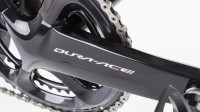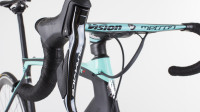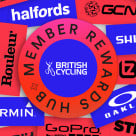Knowledge Level: Beginner
Indoor cycling has evolved significantly over the last few years and, with smart trainers and platforms such as Zwift, no longer has to be a soul sapping slog. Working out which indoor trainer to buy though can be confusing but, with a bit of thought about your cycling goals, budget and indoor training set-up, you should be able to narrow down the options.
Direct Drive Turbo Trainer
With a direct drive turbo trainer, the rear wheel of the bike is removed and the drivetrain directly drives a cassette on the turbo. The majority of direct drive turbos tend to be smart enabled but double check before buying and some will even simulate descending and rough road feel and resistance such as cobbles.
Pros
No rear tyre wear to worry about.
No slipping on acceleration.
Using your regular bike means no position changes.
Newer models are near silent in operation.
Can generate huge amounts of resistance, some models over 2000W.
Cons
Like a regular turbo, you won’t be developing balance or bike handling skills.
Are expensive to buy.
Tend to be bulky, heavy and difficult to store away.
Price Guide
£300 - £1200
Turbo Trainer
A turbo trainer is a metal frame that you bolt your bike to. A roller then presses against your rear tyre and, by using a fan, fluid or magnets, generates resistance for you to pedal against. Many turbos are now smart enabled.
Pros
Wide price range to suit all budgets and it’s possible to get a quality turbo towards the lower end.
You’re training on your actual bike so your position will be the same.
They fold away for easy storage.
You can generate high levels of resistance.
Cons
They can chew up your tyre so having a turbo rear wheel with a turbo specific tyre is a good idea.
Cheaper models can be noisy.
Training on a turbo will not develop bike handling skills.
The rear tyre can slip with hard accelerations.
They can be stressful on your bike’s frame if not setup carefully.
Price Guide
£50 - £600
Static Bike
Static bikes include basic home fitness models, classic gym bike with sofa like saddle, Spinning bikes with large fixed flywheels and top end cycling training specific smart enabled models.
Pros
Always setup and ready to go.
Can be very stable for hard sprint efforts.
You can keep your road bike setup for the road.
Less wear on your road bike.
Higher end models provide excellent training feedback and data.
Cons
Worthwhile models are expensive.
Big, heavy and, once installed, you can’t fold them away.
Your position on them may not exactly match your position on your road bike.
Won’t benefit balance or bike handling skills.
Price Guide
<£100-£3000
Rollers
Three drums mounted within a frame that your ride on. The two rear rollers, that your rear wheel drives, are connected to the front roller by a belt, so it’s spinning too. Traditional rollers, favoured by many track riders for warming up, don’t offer any resistance but you can get models now that do offer some variable resistance and smart capabilities.
Pros
Excellent for developing pedalling technique, balance and bike handling skills.
Relatively cheap, £200 can buy you a very good set.
You can ride your road bike on them, so no position changes to worry about.
No potential stress on frame and low tyre wear.
Most fold up for storage.
Quick to get bike on and off.
Cons
No or limited variable resistance on the majority of models makes hitting wattage targets, especially on low cadence workouts, very difficult.
Learning to ride them confidently can take some time.














